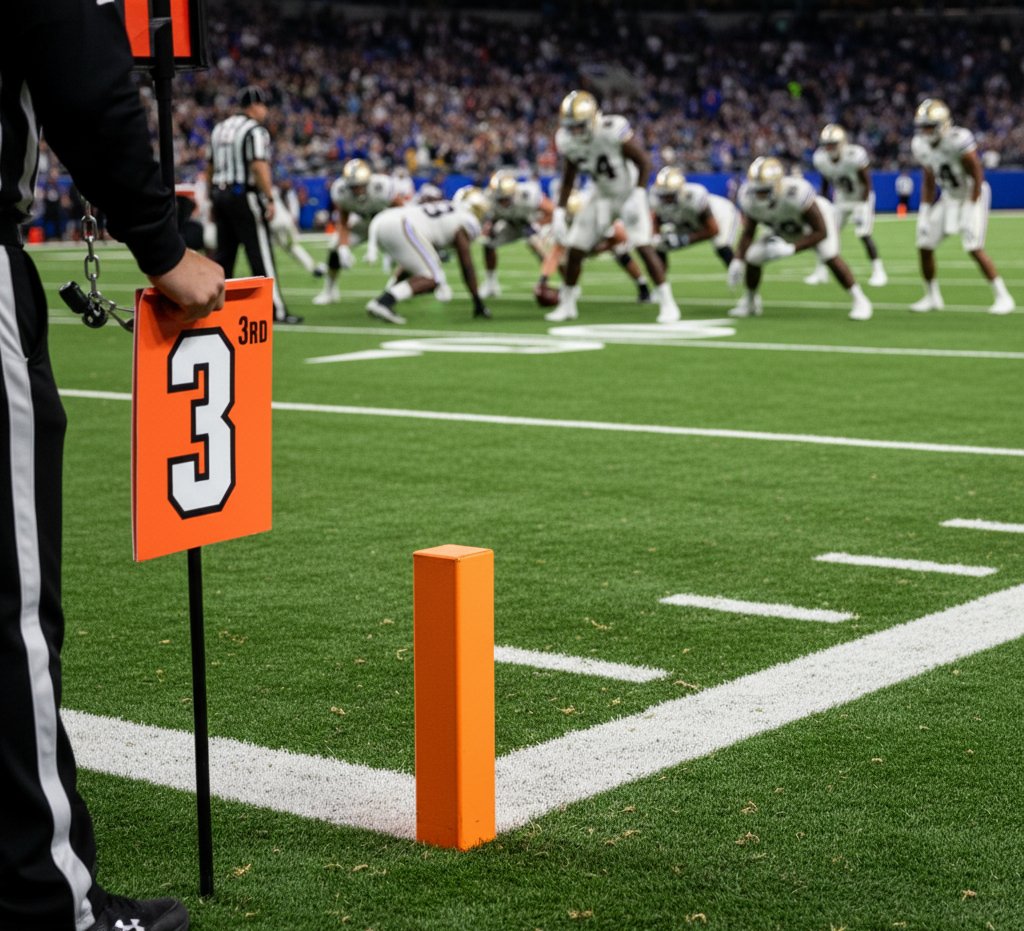American football is one of the most popular sports in the United States, but for new fans, the rules can sometimes feel confusing. One of the first concepts that beginners struggle with is “the downs system.” If you’ve ever watched a game and wondered what the announcers mean when they say “It’s 3rd and 7” or “They didn’t get the first down,” this guide will explain it all.
In this article, we’ll break down exactly how the downs work in football, why they matter, and how they impact strategy on the field.
What Are Downs in Football?
In football, a down is essentially a play. Every time the offense snaps the ball and tries to advance it, that’s one down.
The offense has four downs (or chances) to move the ball at least 10 yards forward. If they succeed, they earn a “first down” and get another set of four downs. If they fail to move the ball 10 yards within four downs, the defense takes possession.
In simpler terms:
The offense gets four tries to move the ball 10 yards.
If they succeed → they get a new set of downs.
If they fail → the defense gets the ball.
How the Down System Works
Let’s walk through the process step by step.
1. First Down (1st & 10)
Every offensive possession begins with a 1st down and 10 yards to go (often said as “1st and 10”). That means it’s the first attempt, and the team needs to gain 10 yards.
2. Second Down (2nd Down)
If the team doesn’t gain all 10 yards on their first play, they move to 2nd down. For example:
If they gain 4 yards on 1st down, the next play is 2nd and 6 (because they still need 6 more yards to get to 10).
3. Third Down (3rd Down)
The third down is often critical. Teams need to be strategic here:
If it’s 3rd and short (like 3rd and 2 yards), they’ll probably run or use a quick pass.
If it’s 3rd and long (like 3rd and 12 yards), they’ll usually pass deeper.
4. Fourth Down (4th Down Decision)
Fourth down is decision time. Teams have several options:
Go for it: Try to gain the remaining yards. If they fail, the other team gets the ball at that spot.
Punt: Kick the ball to the other team, usually on 4th and long.
Field Goal Attempt: If close enough to the goal posts, kick a field goal for 3 points.
This balance of risk and strategy makes 4th downs some of the most exciting moments in football.
Example of Downs in Action
Imagine the offense starts at their own 25-yard line:
1st & 10 at the 25 → They run for 6 yards.
2nd & 4 at the 31 → They pass for 3 yards.
3rd & 1 at the 34 → They run for 2 yards.
Result: First Down at the 36. They now have a new set of downs.
The chain crew on the sidelines tracks these 10-yard segments, so fans can always see where the offense needs to reach for the first down.
Why the Downs System Is Important
The downs system creates the structure of the game and adds strategic depth:
Offensive Strategy – Teams must choose whether to run, pass, or kick depending on down and distance.
Defensive Pressure – Defenses try to force 3-and-outs (stopping the offense in 3 plays, forcing a punt on 4th down).
Clock Management – Late in games, teams may run conservative plays to waste downs and run out the clock.
Excitement Factor – Critical downs like 3rd and long or 4th down conversions create dramatic game-changing moments.
Common Football Down Terminology
If you’re new to football, here are some key phrases you’ll hear during games:
“1st and 10” – First down, 10 yards to go.
“2nd and 7” – Second down, 7 yards to go.
“3rd and long” – Third down with 8+ yards needed.
“4th and inches” – Fourth down with less than a yard needed.
“Moving the chains” – Getting a first down (the sideline chains literally move forward 10 yards).
“3-and-out” – Offense fails to get a first down after 3 plays and must punt on 4th.
Downs in Different Levels of Football
While the system is the same across all levels, there are small variations:
NFL (National Football League): Strict 4 downs, 10 yards. Very strategic with 4th down play-calling.
College Football: Same 4 downs, but overtime rules differ.
High School Football: Same basic structure, though field goal range is often limited.
Canadian Football: Uses only 3 downs instead of 4, which makes for a faster game with more passing.
Frequently Asked Questions
Q: What happens if a team doesn’t get 10 yards in 4 downs?
A: The other team gets possession of the ball at the spot where the play ended.
Q: Can you get more than 10 yards on a down?
A: Yes! If the offense gains more than 10 yards, they still get a first down — they just start the new series from where the play ended.
Q: Why do teams punt on 4th down instead of going for it?
A: To avoid giving the opponent great field position. Punting pushes the other team farther back.
Q: What does “2nd and goal” mean?
A: It means the offense is within 10 yards of the end zone, so they need to score a touchdown rather than gain a first down.
Final Thoughts
So, how do the downs work in football? The offense has four chances to gain 10 yards. If they succeed, they earn a first down and keep driving toward the end zone. If they fail, the defense takes over.
This simple rule forms the backbone of the sport. Downs determine offensive play-calling, defensive schemes, and much of the drama that makes football so exciting.
Next time you watch a game and hear “3rd and 7,” you’ll know exactly what it means — and why the next play could decide the entire drive.

